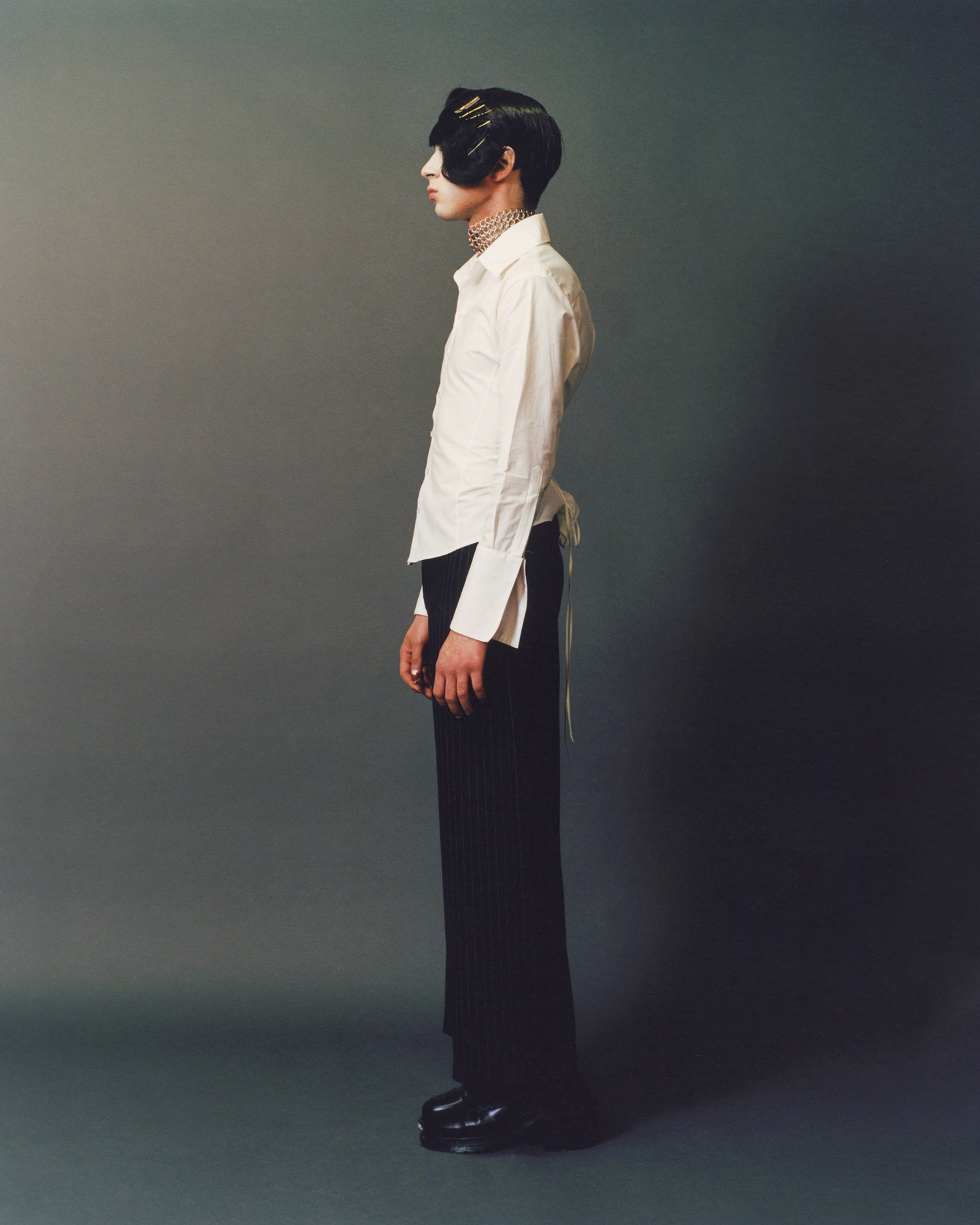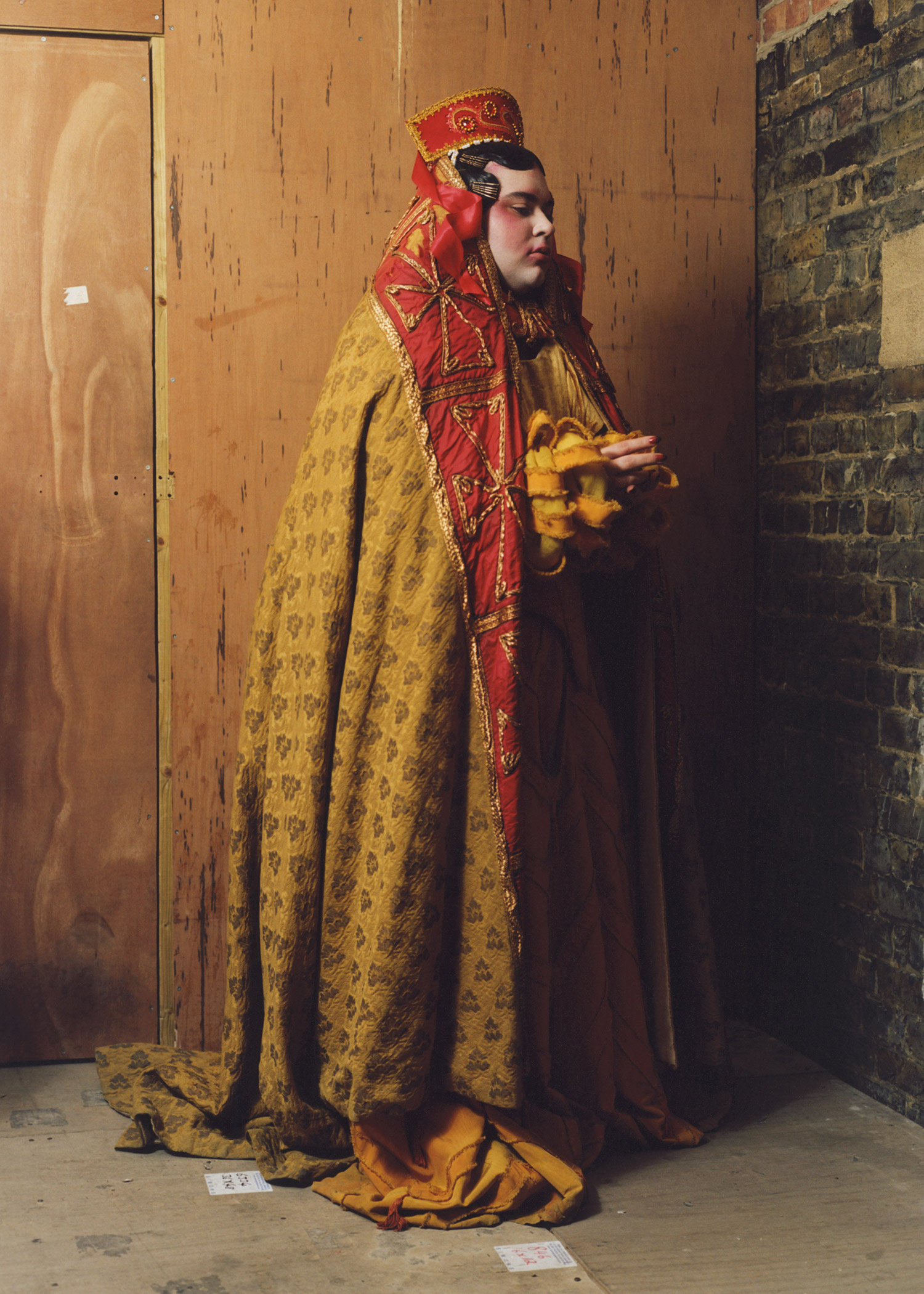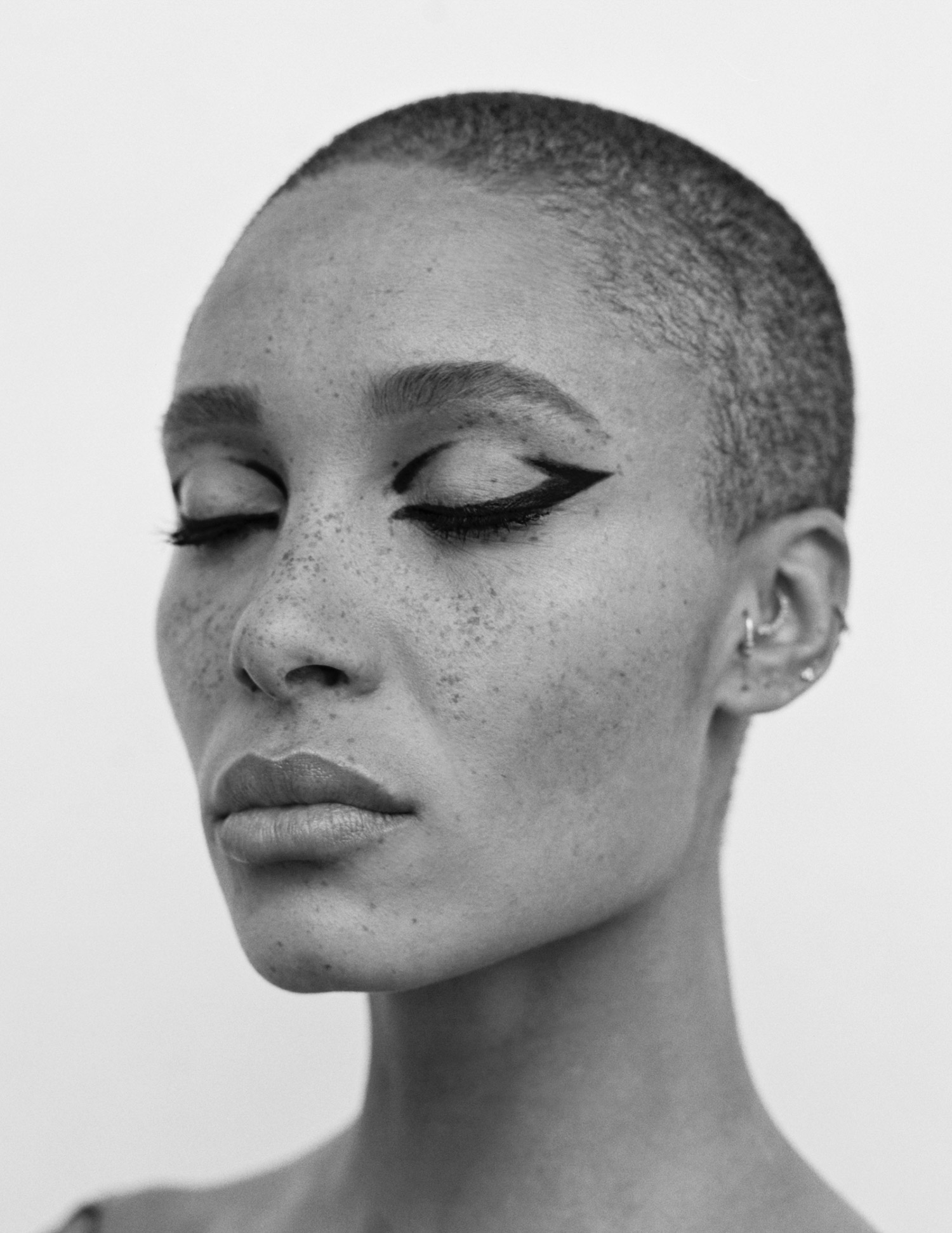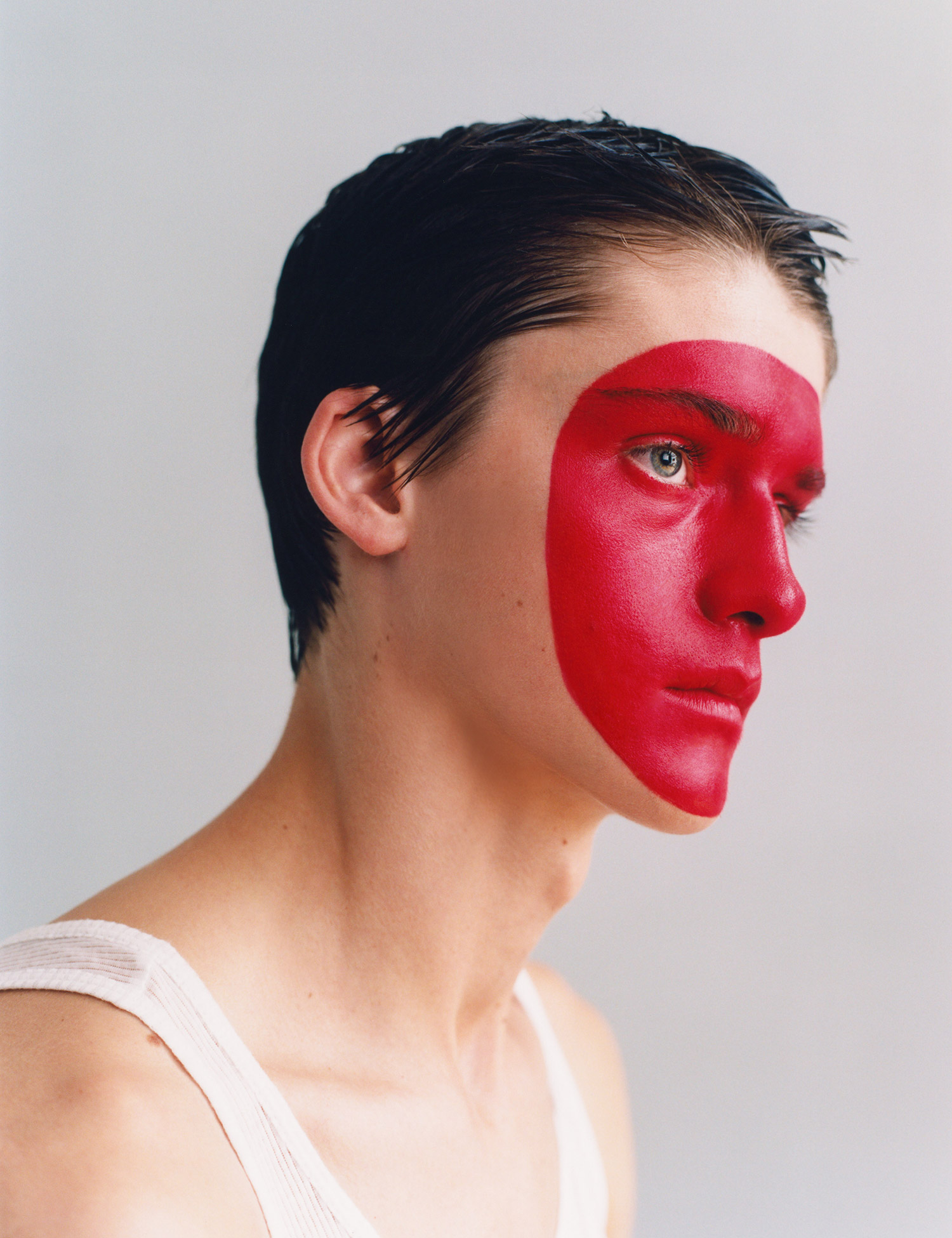
Harold Smart and James Spencer, Candy Magazine
Backed by make-or-break magazines and editors alike, Thurstan Redding is emerging from his under-the-radar moment and positioned for imminent come-up. In fact, the 25-year-old photographer has already stood behind the lens for American Vogue, British Vogue, Arena Homme +, i-D, Dazed, Love, M Le Monde, Man About Town, Candy & Buffalo Zine. Thurstan Redding, Hong Kong-born, France-grown and a former student of politics at Cambridge University, has defined a clear line of thought throughout his growing list of works: intimately and carefully framing his subjects–often friends–in the context of their respective and collective identities. Redding, now based in London, is part of the new generation of photographers fine-tuning the photographic terms and articulating representation through fashion’s lens and beyond. He’s doing so, of course, with plenty of talent. He spoke to Models.com about experiences of casual racism, his favorite subjects and his dream Comic Con shoot.
Follow Thurstan on Instagram @ThurstanRedding
Do your roots influence your work? How so?
I wouldn’t say it has directly influenced my work from a thematic perspective. Being mixed race is something which influences my personal life, my conception of belonging and home, but in my work I’ve always chosen to focus on an escapist fantasy which is what fashion really meant to me growing up. I absolutely adore the work of artists in fashion, and other industries, that pull from their heritage to inform their work, but for me it’s never been something I wanted to define my work by.
My Asian heritage, however, does affect the way people have treated me while working in fashion. Not always, of course, and there’s huge amazing swathes of the industry committed to inclusivity and diversity in a very real way, but being mixed race I am privy to casual racism that others don’t always notice. I’ve become a lot more aware of how culturally insensitive both fashion and photography can be. Not only have I been confronted with full-on racism, but also with much more subtle forms of aggression that are much harder to pin-point as they often come from a place of ignorance and not malice.
On my own sets it’s happened several times that someone that I haven’t met before instantly assumes I’m from the beauty team solely on the basis that I am Asian, and that the photographer must be white. This is before I’ve even introduced myself, and I find it surprisingly presumptuous and prejudiced. This is an example of the kind of subtleties I’m referring to, but of course there are much worse examples–that have happened both to me and to many other in the industry and wider all the time.
What are the modern challenges of being a photographer?
I think many will agree that compromise is definitely something every young photographer is faced with. Shoots have to be a collaborative effort and therefore always lead to compromises, but especially in commercial situations it can become quite tricky to satisfy a financial agenda when pushing your own creative input. That’s something I feel most photographers will probably relate with: striving to sustain crucial commercial links but also be satisfied with your own work. This isn’t the case with all clients though, thankfully, many do respect your opinion and I’ve been lucky to work with art directors and editors who have been very understanding and supportive of what I wanted to do.
On my own sets it’s happened several times that someone that I haven’t met before instantly assumes I’m from the beauty team solely on the basis that I am Asian, and that the photographer must be white.
Is there anything you had to unlearn to improve?
Definitely, I think it’s quite easy to develop certain bad habits when shooting and that’s something I had to work quite hard on unlearning. I also discovered photography via digital, as analog photography initially felt very inaccessible. This meant I became used to the luxury of having an unlimited number of shots, whereas shooting with film really forced me to think out every shot beforehand – which took a lot of getting used to.
What’s the most truly unrelated thing that has inspired you or left an impression on your work?
I have no idea why, but I very often get ideas when I’m commuting on the tube or on the bus; it’s surprisingly a really great place and time to just think through ideas clearly. I’ve also listened to Ella Fitzgerald and A Tribe Called Quest repeatedly for years and that’s been something that’s really helped when I’m planning shoots. I guess it just really appeases me in a way that I can’t rationally explain.
Can fashion shoots be as personal as, say, personal work?
Absolutely, I don’t think any fashion story can really be totally impersonal. I feel there’s always elements of self-portraiture somewhere in one’s work. Fashion shoots also require a personal and intimate element to them in the exact same way that personal work does. Although on a fashion shoot you might only be spending a day or even a couple of hours with someone, it’s still crucial to establish some kind of link with that person. Otherwise I feel the images can easily feel really distant.
Your favorite kind of subject or person? Any examples?
I’m inspired by my friends. Among them are some of the most fascinating and resistant people, who really dissect and critique identities in very powerful ways. This hasn’t necessarily been the case for me, but I’ve felt it’s my job to try and offer them representation in my work. I feel very committed to the idea of subtly repositioning queer and political bodies into a classical photographic canon.
I’ve always aimed for my work to be accessible to a wide range of audiences, while paying subtle tribute to the queer people I know and love, and being unquestionably and inherently gender, age and racially diverse. All I aim for is for people to understand that the the subjects of my images have every rightful place to be there.
All I aim for is for people to understand that the the subjects of my images have every rightful place to be there.
Can you give me an elevator pitch for your fantasy project?
I’ve been lucky enough to shoot it! I spent a couple of days at Comic Con last year documenting the art of cosplay. It’s something I’ve been wanting to do for years and will be out this fall. Rarely have I been in a more inclusive space that celebrated diversity and individuality in such a creative way. It’s also one of the first projects I’ve been a real part of on the publishing front, which is something I’m very keen to explore in the future.














